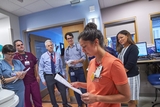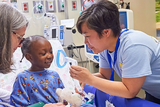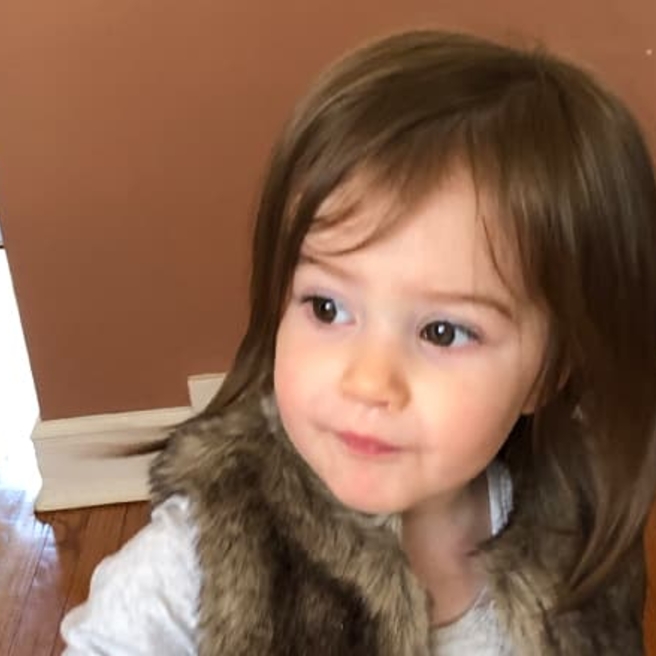Department of Anesthesiology and Critical Care Medicine

Children’s Hospital of Philadelphia (CHOP) cares for some of the sickest children in the nation. Specially trained staff from the Department of Anesthesiology and Critical Care Medicine provide 24-hour coverage in CHOP’s operating rooms and intensive care units.
Our team members also work in cardiac catheterization labs, radiology and sedation units, CHOP’s Ambulatory Surgery Centers, the Oncology Day Hospital, NICUs in affiliated hospitals and many more locations where you child may receive care.
Founded in 1964, the department has played a pioneering role in improving outcomes for children in intensive care. In 1967, the Department established the first pediatric intensive care unit (PICU) in the United States, followed by the country’s first intensive respiratory rehabilitation care unit for ventilator-dependent children in 1975.
How we serve you
We offer a variety of specialized programs and clinical services to children with life-threatening illnesses and injuries, and to their families.

Why choose us for anesthesia and critical care
CHOP established the first PICU and intensive respiratory rehabilitation unit for ventilator-dependent children in the United States. Each year, we provide patients with:
- 33,000-plus anesthetics
- 3,000 cardiothoracic or cardiac services
- 31,000-plus inpatient days in PICU/CICU/Progressive Care

Meet your team
Our specially trained anesthesiologists, critical care physicians and nurses provide 24-hour coverage in CHOP’s operating rooms, intensive care units and many other locations your child may receive care.

Anesthesiology and critical care resources
Caring for a child with any illness or injury can be overwhelming. We have gathered resources to help you find answers to your questions and feel confident with the care you are providing your child.
Events
Pediatric Anesthesia Point of Care Ultrasound Workshop
Saturday, Nov 01, 2025

Anesthesiology careers
Join a growing team of world-class anesthesiologists at CHOP.

Annual Report
The Department of Anesthesiology and Critical Care Medicine has compiled its 2024 Annual Report with key updates from across the department.
Your donation changes lives
A gift of any size helps us make lifesaving breakthroughs for children everywhere.


